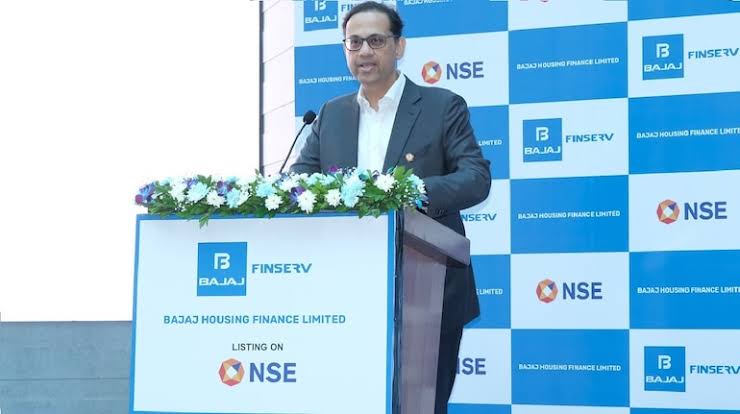Add your promotional text...
Bajaj Housing Finance Shares Drop to ₹160.12: Should Investors Consider Buying?
Synopsis: Bajaj Housing Finance Ltd. (BHL) has experienced a sharp 7.80% decline in its stock price, settling at ₹160.12. This dip has raised concerns about the company's short-term prospects and market conditions, particularly given rising interest rates and inflation pressures. However, with strong fundamentals, an oversubscribed IPO, and improving Return on Equity (ROE), investors are contemplating whether this drop presents a potential buying opportunity. This blog explores the stock's financials, market sentiment, and technical analysis to help investors make informed decisions.
ANALYSIS AND OPINION
By Vikash Purohit
9/25/20244 min read


Bajaj Housing Finance Ltd. (BHL) has seen its stock price experience considerable swings, which mirrors the broader market movements and overall investor sentiment. In the most recent trading session, BHL shares were priced at ₹160.12, reflecting a sharp decline of 7.80% from the previous close of ₹173.66. This steep drop has led to concerns about the company’s short-term outlook and general market conditions, prompting investors to reevaluate their positions.
Current Snapshot of Bajaj Housing Finance Shares
Current Price: ₹160.12
Previous Close: ₹173.66
Change: -7.80%
Market Capitalization: ₹133,958 Crores
52-Week High/Low: ₹188.50 / ₹146.00
The stock opened slightly higher at ₹161.70, showing a brief recovery from previous lows, but it remains well below the prior day's close. Despite this downturn, the trading volume exceeded 26 million shares, indicating heightened investor activity, even amid falling prices.
Financial Overview of Bajaj Housing Finance
A review of Bajaj Housing Finance's financial metrics reveals a nuanced picture. While some indicators are promising, others might raise caution:
P/E Ratio: 141.20
Earnings Per Share (EPS): ₹1.13
Dividend Yield: 0%
Book Value per Share: ₹12.61
The company's Return on Equity (ROE) is currently at 14.15%, a notable improvement from its five-year average of 11.13%. However, the elevated P/E ratio could suggest that investors are anticipating future growth rather than basing their decisions on current earnings.
Market Sentiment: What’s Driving the Price Decline?
Market sentiment around Bajaj Housing Finance has been affected by a variety of factors, both internal and external. A key challenge facing the broader financial sector is the economic environment, characterized by rising interest rates and inflationary pressures. These factors may be putting additional stress on the housing finance market, potentially slowing down lending growth and homebuyer activity.
Recent Developments for Bajaj Housing Finance
IPO Performance: A bright spot in Bajaj Housing Finance’s recent history is its IPO, which saw significant demand, being oversubscribed by 7.5 times by institutional investors on the second day. This level of interest suggests confidence in the company’s long-term prospects, which could stabilize the share price moving forward.
Market Volatility: Like many stocks, Bajaj Housing Finance has been caught in the broader market's fluctuations. The volatility in indices such as the Sensex and Nifty, largely driven by macroeconomic news, has caused significant price movements. This can create short-term opportunities or risks for investors depending on their strategy.
Analyst Insights: Analysts have expressed differing views on Bajaj Housing Finance. Some believe the current price presents a buying opportunity for long-term investors looking for value, while others are cautious about near-term risks. The stock may see further declines before it stabilizes, according to more conservative viewpoints.
Technical Analysis: Key Levels to Watch
From a technical perspective, Bajaj Housing Finance’s stock performance is showing some important patterns and levels of support and resistance:
Support Level: The stock’s nearest support level is around ₹146, close to its 52-week low. If the price continues to fall, this level may provide some cushion against further declines.
Resistance Level: On the upside, resistance has been identified at ₹173, a point where selling pressure has previously been strong. Should the stock break through this resistance, it may signal a potential recovery.
Investors and traders alike are advised to watch these levels closely, as they could significantly influence short-term trading strategies. A sustained break below ₹146 could signal further weakness, while a move above ₹173 might suggest a rebound.
Is This a Buying Opportunity?
With the stock now trading near the lower end of its 52-week range, some investors may wonder whether this is the right time to enter or increase their position. A few factors to consider:
1. Valuation: The high P/E ratio indicates that the stock may be overvalued relative to current earnings, but it could also mean that the market is pricing in substantial future growth. Investors need to assess whether they believe the company can deliver on these expectations.
2. Market Conditions: Broader economic factors like interest rates, inflation, and overall market sentiment are crucial. These variables will heavily influence Bajaj Housing Finance's ability to maintain profitability and grow in the current climate.
3. Long-Term Prospects: Despite recent volatility, Bajaj Housing Finance has strong fundamentals, as evidenced by its high demand in the IPO market and its improving ROE. Long-term investors might see the current dip as an opportunity to buy into a company with solid growth potential at a discounted price.
Conclusion: A Stock to Watch Closely
While the recent decline in Bajaj Housing Finance’s share price has understandably raised concerns, it's important to view the stock in the context of both short-term market conditions and its longer-term potential. For long-term investors, the current dip may represent an opportunity, especially given the company’s strong fundamentals and the positive reception to its recent IPO. However, short-term traders should remain cautious, particularly given the stock’s high P/E ratio and the prevailing market volatility.
As always, potential investors are advised to consult with certified financial advisors before making any decisions. Market conditions remain fluid, and understanding the full picture is essential for informed investing.
Disclaimer: This article contains information provided by financial experts and brokerage firms. The views expressed are not those of the publisher. Always consult a certified financial advisor before making any investment decisions.
